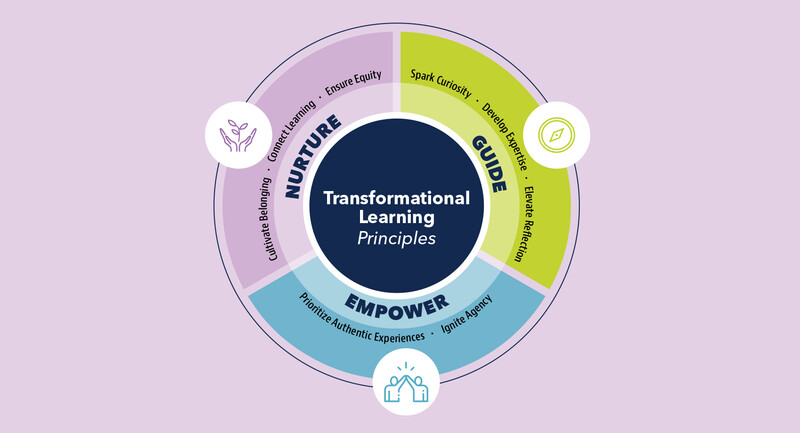Teacher educators have long touted the potential of using classroom videos to give instructional feedback. Today, given the ease of recording and streaming and the proliferation of online platforms that allow time-stamped commenting (such as Torsh and Edthena), classroom video can play an even larger role in professional development. But what should that look like?
Over the past five years, we’ve worked to develop an instructional coaching model for history teachers in Prince William County, Virginia. We focused on social studies teachers because—although all teachers benefit from instructional coaching—social studies teachers rarely receive it. Districts generally deprioritize social studies (Fitchett, Heafner, & Lambert, 2014), and few districts allocate sufficient resources to support content-focused instructional coaching for social studies teachers, even when they do so for math or literacy. We believe this is a mistake: In this moment of national historical reckoning, when many bemoan the absence of civic discourse, social studies teachers should receive more, not less, direct instructional feedback.
Our model leverages teacher leaders, many of whom are full-time classroom teachers, to coach their peers in the same district (though not necessarily in the same schools) in the practices of historical inquiry (Reisman, 2012). But many of these teacher leaders had not had prior experience either providing or receiving coaching. Research clearly shows that instructional coaches need support offering feedback (Woulfin, 2017), so we focused on guiding our teacher leaders to break out of the “culture of nice” that dominates peer interactions between teachers (MacDonald, 2011). In designing our coaching model, we were sensitive both to the needs of teachers and to the needs of the teacher leaders who served as first-time coaches.
The key feature of the program involves teachers posting classroom videos to an online video-sharing platform. By posting videos online and receiving asynchronous feedback, teachers benefit from ongoing job-embedded professional development that allows them to test out and adapt best practices for their classroom contexts. The model makes ongoing instructional coaching a viable option for social studies teachers.
We learned a lot about how coaches can offer instructional feedback asynchronously. Encouraging teachers to post videos online was only the first step. Effective instructional feedback on classroom video in an online asynchronous context also requires: (a) a prior conversation about the teacher’s goals; (b) focusing each coaching cycle on a single instructional practice; and, most importantly, (c) designing “reflective tasks” to structure feedback and asynchronous interaction.
Step 1: Set Goals
Coaching relationships depend on trust. Teachers must believe that their coach understands them, their vision for instruction, and their goals for the coaching experience. This foundational trust is especially critical in the context of online, asynchronous coaching, where teachers and coaches have fewer opportunities to build rapport.
In our model, before any instructional coaching begins, coaches reach out to teachers to have a conversation virtually or by phone. In some cases, this exchange may happen over email. Sometimes, coaches might ask teachers to videotape their instruction before the initial goal-setting session, so the video can serve as a shared point of reference. Across cases, the coach asks the following questions and uses this information to guide their feedback throughout the year:
What are your general learning goals for students? What are your goals regarding history and historical thinking?
How have you already tried to make progress towards those goals?
How would you evaluate your students’ current progress towards those goals?
What are some goals you have for yourself as a teacher?
An initial goal-setting conversation benefits both teachers and coaches. Coaches learn what matters most to teachers and to align their feedback accordingly. Teachers appreciate that coaches want to learn about and attend to their personal goals, which in turn improves their buy-in and enthusiasm for coaching.
Step 2: Focus on Specific Practice
One of the challenges of coaching with video is that video recordings often contain too much information. It’s quite difficult to know where to begin when offering feedback on a videorecording of a full classroom lesson. For this reason, we adopted a practice-based approach in our coaching model, where we sought to delineate, specify, and bound core instructional activities related to teaching historical inquiry (Grossman, et al., 2009). Teachers were introduced to each practice through exemplar videos, specifications, and planning guides. On any given video, coaches only commented on whichever practice was the focus of that particular cycle.
When we started the program, we focused on practices that mapped onto a document-based history lesson. For example, the practice of Establishing Background Knowledge (EBK) refers to the first 10-15 minutes of a document-based lesson when the teacher prepares and motivates students for the lesson’s inquiry. In Fall 2020, because we wanted to be flexible and responsive to the challenges of online teaching, we shifted to focus on broader instructional practices (for example, Orienting Students to Each Other).
In this moment of national historical reckoning, when many bemoan the absence of civic discourse, social studies teachers should receive more, not less, direct instructional feedback.
These instructional practices do not correspond to specific segments of a lesson but rather are woven throughout. This shift presented a challenge to coaches, who could no longer restrict their feedback to a discrete part of the lesson. Coaches have tackled this challenge in two ways: (a) by asking teachers to identify 2-3 segments in the lesson when they engaged the focal practice; or (b) by identifying certain junctures in the lesson where the practice should emerge (e.g., orienting students to each other should be evident in the final discussion) and focusing teachers’ attention on these moments. No matter what the focal practice, choosing a specific strategy or practice serves to center coaches’ feedback on video and teachers’ analysis and reflection.
Step 3: Design a Reflective Task
Perhaps most essential to our online coaching model was the method we developed to support coaches in offering feedback on teachers’ videos. Initially, we had little experience with supporting asynchronous interactions. We proposed that teachers, once they uploaded their video, use the “tagging” feature to identify which components of a given practice they enacted and which elements of their enactment seemed effective or needed work (Did they pose the lesson’s central question at the start? Did they transition clearly to active reading?). We assumed that if coaches responded with feedback or by posing questions, teachers would engage, and the asynchronous discourse would resemble an in-person interpersonal exchange.
That rarely happened. Teachers did tag the videos they uploaded. And coaches did respond with feedback, praise, and questions. Indeed, in many cases, coaches posted as many as 20 comments on a 15-minute video. But teachers, likely overwhelmed by the barrage of comments, rarely responded.
In the second year of the project, we designed a new method for structuring teacher-coach interaction online. We introduced a template for a “reflective task” that we hoped would both generate more interaction between coaches and teachers and deepen teachers’ analysis of their instruction.
Aligned with the research on facilitating teacher noticing with video (van Es, et al., 2014), the template comprised three parts: (a) a focused observation about the teacher’s instruction; (b) a claim about desirable instructional practice; and (c) a targeted prompt for teachers to identify three moments in the video where they could have engaged in the desirable practice. For example, the task has the following structure:
“In watching your video, I noticed _______. One goal of this lesson [or instructional practice] is________. Can you identify three moments in the video where you could have_________?”
Filled out, this might read:
“In watching your video, I noticed that for much of the lesson, students directed their comments to you. One goal of orienting students to each other is for students to respond to one another and build off each other’s ideas. Can you identify three moments in the video where you could have helped students direct their comments to one another?"
Teachers responded to the prompt and then coaches typically followed up with additional feedback. In that sense, we conceived of the prompt as both a scaffold for coaches’ feedback and for teachers’ video analysis. When we compared coaches’ feedback on the videos before and after we introduced the reflective task, we noted dramatic improvements.
Feedback became timelier and more efficient. The average length of the feedback cycle, as measured by timestamps between the first and last comment posted, shrunk by half (from six to three days after coaches started using the reflective tasks). And the sheer number of comments per video shrunk by two-thirds.
Coaches’ feedback became more streamlined as they began to design reflective tasks that focused teachers’ attention on key features of the video. For example, one coach wrote the following on a video featuring the practice of establishing background knowledge:
You do a great job in this video of bringing in background information and tying in previous learning. One of the hardest parts of document-based lessons is getting student involvement. In your video, I only heard a few student voices. Could you identify three moments where you could have increased student engagement or voice?
The teacher in this case responded by tagging one moment in the video and writing, “Here, I could have engaged more students by asking questions about why a muckraker would tell the story of a problem using photos.” The coach responded, “That’s a great high-level question. This is even a spot where a quick 30-second shoulder share with a tablemate could help. While your lesson focused more on the life in cities, this could bring up issues with literacy at this time, too.”
Prior to incorporating the reflective task in his feedback, this same coach made 19 (!) comments on a similar video without a single response from a teacher. The reflective task helped the coach focus their feedback and generate more teacher-coach interaction.
We also found that coach feedback became more actionable and direct. In contrast with standalone affirmations such as “I like this activity,” or “awesome question here,” once coaches started incorporating the reflective task, they were more likely to pair praise with a rationale. For example, one coach made the following comment on a teacher’s video: “Great start with having your central question written on the front board, so students can keep referring back to it.” The coach’s rationale provided specific, transferable feedback that the teacher could apply to future lessons.
Even more dramatic was the reduction in rhetorical questions. Before using the reflective task, coaches' comments were interspersed with rhetorical questions that masked more direct feedback. For example, “Do you think students are starting to lose interest at this point? and “Do you think [this] is engaging enough? I only ask because you kind of hit on this already.” Once coaches had access to the structure of the reflective task, they were able to embed such direct feedback into the prompt. The same coach who initially posed the most rhetorical questions composed the following prompt using the reflective task structure:
You spend a lot of time modeling how to source a document by breaking down each component for the students, but you don’t really take much time to explain to students why sourcing is such an important skill historians use when analyzing a document and answering a historical question. What could you have said to highlight why sourcing is important?
We have begun to see evidence that this model of online video-based coaching has borne fruit. Exit surveys and interviews each year indicate teachers’ enthusiasm for the program and increased confidence implementing ambitious instruction with historical documents. Our analysis of teachers’ instruction before and after participating in a year of coaching reveals their overall growth in discussion facilitation. In our third year, we launched an apprentice program, where teachers who had been coached would shadow an experienced coach for a year before beginning to coach themselves. In doing so, we’ve created a pipeline for future coaches and achieved our goal of creating a self-sustaining program.
Getting to the Heart of the Feedback
Online video platforms offer an untapped opportunity to provide job-embedded instructional feedback to teachers, especially in social studies or other overlooked subjects. Asynchronous interaction means teachers and coaches could engage in the coaching cycle whenever it fits their schedule. Furthermore, video recordings present lasting and reliable artifacts that ground coaching discussions in a shared point of reference.
But the challenges of an asynchronous online coaching model are twofold: how to develop relational trust between teachers and coaches and how to provide effective feedback. In our experience, the first problem proved far less challenging than the second. Teachers had volunteered to participate, assumed coaches were engaging in good faith, and were hungry for subject-specific instructional feedback. The bigger challenge for us was supporting coaches in giving good feedback. By focusing each cycle on an instructional practice and by framing asynchronous feedback with reflective tasks, we found that coaches’ feedback became timelier and more focused, specific, actionable, and direct. These findings underscore the value of feedback structures that successfully channel and focus coaches’ and teachers’ attention.









